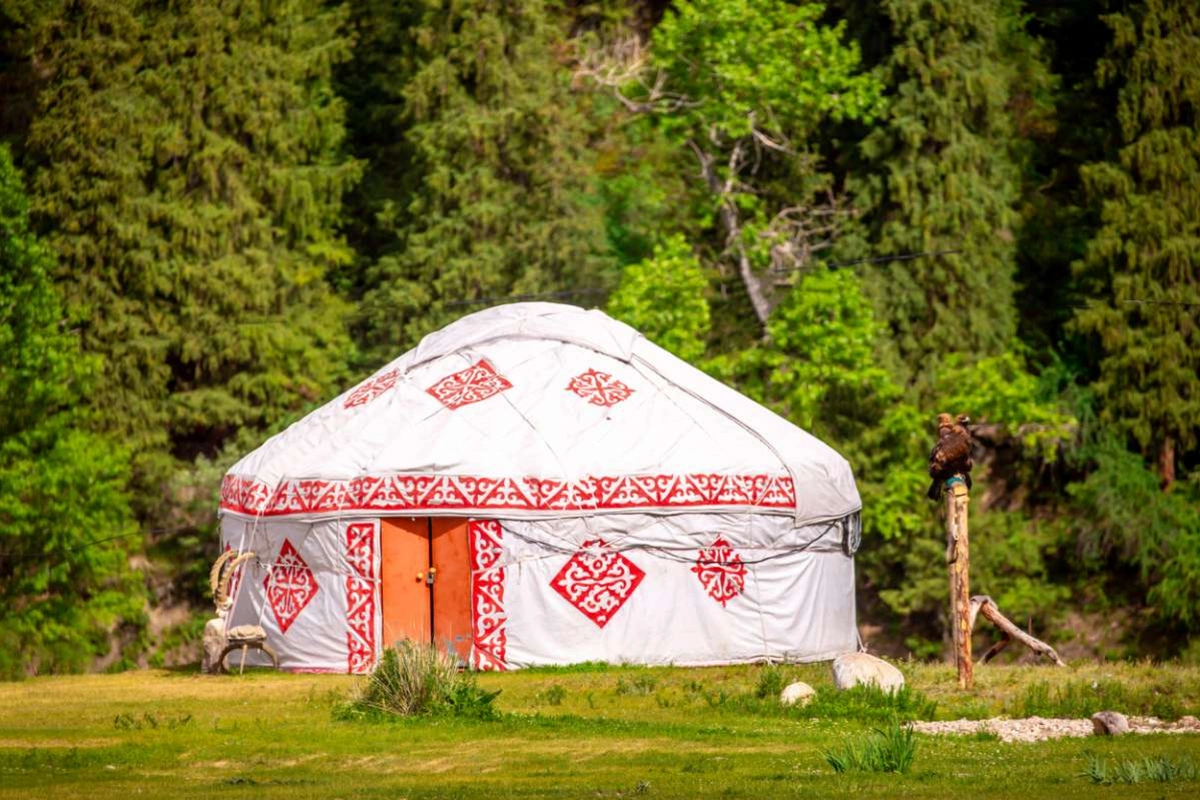
Traditional housing used among many Central Asian nations today is utilized as an eco-friendly glamping option in the Western world. This is not the first instance when the heritage of the oppressed and underrepresented ethnic groups is used for profit. Yet who is to say what makes it cultural appropriation?
Image: Vera Larina/Shutterstock
When the Soviet Union seized power in Central Asia, the Western way of living was one of the first things forced upon the citizens. Viewing the nomadic lifestyle as unfit for its cosmopolitan future and nomads as savages who needed to be educated, soon everything traditional was erased. That embodied the beginning of Soviet rule that, for the next 70 years, caused further damage in the form of collectivization, Russification, man-made famine, and nuclear test bombings, to name a few. When faced with Soviet policies as a continuation of Russian imperialism on its occupied territories, Central Asian nations had to adapt to the lifestyle of the oppressor, which meant having to abolish the traditions of their ancestors and even their religious views. One of the material things was yurts, the traditional homes of nomads.
Ironically, today, yurts have become a new eco-friendly, unique, and glamorous type of camping in the West. Could Central Asian ancestors predict that something they were shamed for and robbed of would become appreciated by Westerners? Or is it another case of cultural appropriation when the West profits off the cultural heritage that doesn’t belong to them?
Cultural appropriation is initially an act of commodification of culture by foreigners. Unlike the white colonialists who forced their way of living on different native groups that they conquered, today, their descendants have learned to not only embrace cultural diversity in the names of globalism and capitalism but have gone further to rip off cultures that are not theirs. Western cultural identity crisis is not new. Prior to turning to Central Asian nomadic culture, there were numerous other attempts at appropriating other cultures. Most notable is the appropriation of Native American culture in the US. Similar to nomadic yurts, Native American teepees and hogans were also used for glamping in the US until Native Americans raised the issues of mockery and cultural appropriation of their symbols. While the attributes of Native American culture are being marketed and profited on, Native Americans are left forgotten, their history erased, and their lands taken.
However, cultural appropriation is not a matter of concern in Central Asia. Seeing elements of their culture being “implemented” often makes post-colonialist nations feel pride in being recognized by Westerners. Although nomads had different experiences with their colonizers after the collapse of the Soviet Union—being able to have a country of their own and their languages no longer being secondary—they fell victim to the commercialization of their culture without receiving any compensation or recognition in the same way as many other native cultures around the globe.
There is, of course, nothing wrong with white people wanting to live in yurts. However, it is a fact that nomads were shamed and labelled as “savages” for what now is being praised as unique and appealing, as only when white people decide to “whitewash” (to erase the origins of) a custom can it be considered acceptable. A good example of this is Louis Vuitton putting their pop-up store in St. Moritz in the form of a yurt. This glamorized take on yurts somewhere in the Swiss mountains was considered to be in no way a celebration of any nomadic nation, merely a rip-off of another cultural heritage. Why not install it in one of the countries where yurts take their origins from? Another instance of Central Asian cultural heritage being appropriated in the name of profit is using ornaments in fashion collections. As reported by Cabar Asia in their “How Global Brands Appropriate National Ornaments of Central Asian Countries” article, the rising popularity of Central Asian ornaments among worldwide brands doesn’t benefit the countries in the region, as “brands do not mention the culture and origin of ethnic fabrics and patterns.” Therefore, being “recognized” by worldwide brands when they use ornaments or yurts without mentioning whose culture they are inspired by, or whose cultural heritage they are using, while still profiting from it is an act of cultural appropriation.
An excellent example of yurts being used for a meaningful cause and by descendants of nomads is the Yurts of Invincibility that were installed by the Kazakh diaspora in seven Ukrainian cities in the act of post-colonial solidarity with Ukraine. Reminding the world that yurts are more than just another eco-friendly glamping spot but a symbol of traditional nomadic culture surviving despite imperialism and oppression.
The West needs to understand that the main issue of cultural appropriation lies in ripping off other countries’ cultural heritage and profiting off of it without contributing to it. A potential solution could be collaborating with Central Asian factory workers, artists, and designers when implementing ornaments or installing yurts for your glamorous camping. Acknowledging the origin, history, and meaning of things that, for other cultures, have a much deeper meaning than simply “aesthetics.” So next time you consider booking a glamping stay somewhere, maybe instead visit Central Asia, the historical home of yurts.
Share on social media